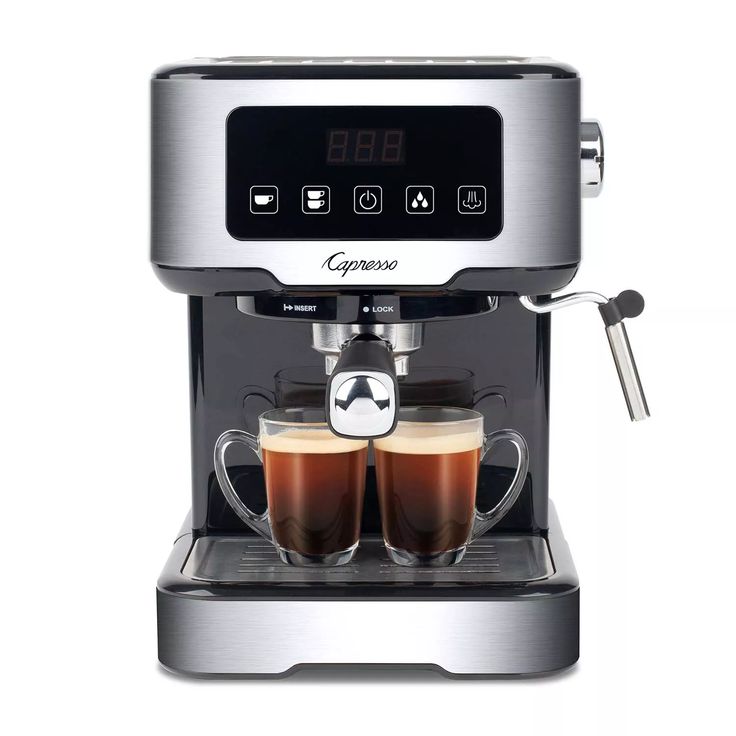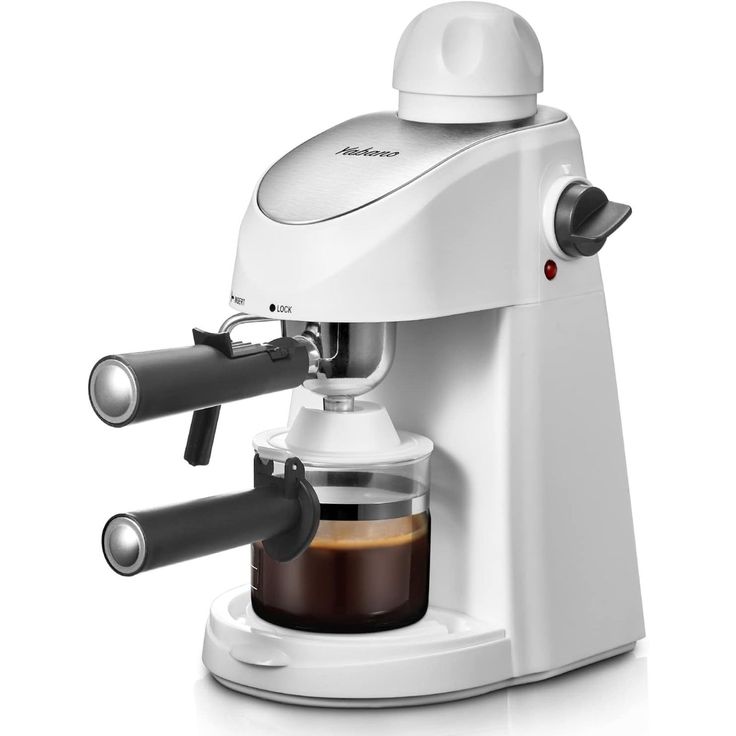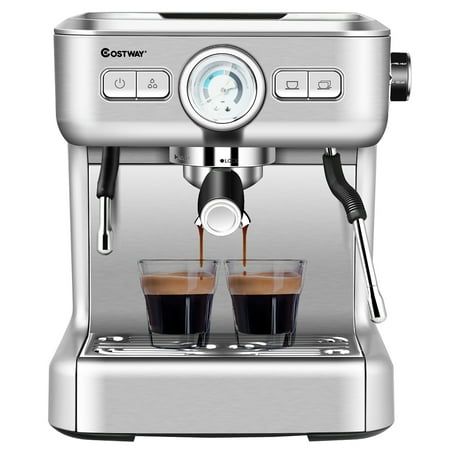When it comes to enjoying a perfect cup of espresso, the cleanliness of your espresso maker is of paramount importance. A well-maintained espresso maker not only enhances the flavor of your brew but also prolongs the lifespan of the machine itself. In this article, we will delve into effective cleaning tips specifically designed for your coffee maker, ensuring that you can savor a coffee experience that’s rich, flavorful, and largely uninterrupted by maintenance issues. Here are seven essential tips to ensure your espresso maker remains in top condition.

Understand Your Espresso Maker’s Components
To properly clean your espresso maker, it’s crucial to understand its key components. Espresso makers typically consist of several parts, including the portafilter, group head, drip tray, and the steam wand. Each of these components contributes to the brewing process and must be cleaned regularly to prevent coffee residue accumulation and scaling.
- Portafilter Care: The portafilter is where old coffee grounds can build up. After each use, it’s vital to knock out the spent coffee grounds and rinse the portafilter thoroughly under warm water. A monthly deep clean with a dedicated cleaning solution can help remove any old oils and residues that water alone can’t dislodge.
- Group Head Maintenance: The group head is the part of the espresso maker that delivers hot water to your coffee grounds. Cleaning it regularly is essential to prevent blockages and ensure a consistent shot of espresso each time. Use a brush and clean water to scrub off any dried coffee particles, and consider running a water backflush once a week.
Each of these components plays a critical role in the brewing process, and failing to maintain them can lead to stale-tasting coffee.
Daily Cleaning Routine for Espresso Makers
Establishing a daily cleaning routine will significantly enhance your espresso-making experience. Before and after each brew, a few simple practices can keep your espresso maker in great shape.
- Flush the Group Head: Prior to brewing, run a water cycle through the group head to clean out any old residues. This step helps ensure that only fresh water is used for your coffee.
- Clean the Drip Tray: Excess water and coffee drips from brewing can soil the machine. Make it a habit to empty and rinse out the drip tray every day to avoid unsightly stains and foul odors.
- Rinse the Steam Wand: After steaming milk for lattes and cappuccinos, wipe down the steam wand with a damp cloth to remove milk residues. Additionally, running water through the steam wand helps prevent any blockages.
Developing a daily cleaning routine takes minimal time but pays off significantly by prolonging the life of your espresso maker and ensuring that every cup of coffee is fresh and delicious.

The Importance of Descaling Your Espresso Maker
Descaling is a crucial aspect of maintaining your espresso maker, particularly if you live in an area with hard water. Hard water can lead to mineral buildup, affecting not only the flavor of your espresso but also the performance of your machine.
- Choosing a Descaler: Select a descaling solution that is appropriate for your espresso machine. Never use vinegar or other acidic solutions as they can damage your machine over time.
- Frequency of Descaling: Depending on usage and water hardness, it’s recommended to descale your espresso maker every 1 to 3 months. Follow the manufacturer’s instructions for the best results.
- Descaling Process: Start by filling the water reservoir with the descaling solution mixed with water. Run the solution through your machine just as you would with water. After descaling, flush the machine with plain water to ensure no residue from the descaling solution remains.
By descaling your espresso maker regularly, you not only enhance the taste of your brew but also prolong the life of your machine.
Essential Tools for Espresso Maker Cleaning
Maintaining your coffee machine requires a commitment to regular cleaning, and having the right tools is crucial for effective upkeep. Here’s a detailed list of essential cleaning tools that will help you keep your espresso machine in top shape:
- Cleaning Brushes: Invest in a group head brush and a portafilter brush. These specialized brushes help reach hard-to-clean areas, allowing you to easily remove stubborn coffee grounds and oils that accumulate over time. Their design ensures that you can thoroughly clean all components without causing damage.
- Microfiber Cloths: These are indispensable for wiping down the exterior and interior surfaces of your espresso machine. Microfiber cloths are soft, non-abrasive, and effective at picking up dirt and oils without scratching the machine’s finish. Keeping a few on hand will ensure your machine always looks pristine.
- Espresso Machine Cleaner Tablets: These tablets are specifically formulated to dissolve oils and residues that can compromise the flavor of your espresso. Regular use of these cleaning tablets ensures that your machine remains hygienic and functions optimally, allowing you to enjoy consistently delicious coffee.
- Water Filter: Installing a water filter is an essential step in maintaining water quality for brewing. Good water quality reduces scale buildup in your machine and improves the overall taste of your espresso. A separate water filter can drastically enhance your coffee experience.
By equipping yourself with these essential cleaning tools, you can simplify the maintenance of your espresso maker, ensuring a more efficient and straightforward routine that ultimately leads to a better brewing experience.

Why Using Fresh Coffee Beans Matters
Using fresh coffee beans is crucial for both the flavor of your espresso and the maintenance of your espresso machine. Here are several reasons why fresh beans should always be your choice:
- Minimized Oil Build-Up: Fresh coffee beans have significantly less oil than their stale counterparts. Stale beans release oils that can accumulate and cling to your portafilter and group head, leading to an oily residue that requires more frequent cleaning. By choosing fresh beans, you can help keep your machine cleaner and functioning optimally.
- Enhanced Flavor Profile: The taste of your coffee is fundamentally tied to the freshness of the beans. Freshly roasted beans deliver a complex and robust flavor profile, providing you with a richer and more enjoyable coffee experience. As beans age, they can lose their flavor and aroma, resulting in a flat or dull cup of coffee.
- Proper Storage Conditions: How you store your coffee beans plays a key role in maintaining their freshness. Keeping them in a cool, dark place, preferably in an airtight container, can significantly reduce oxidation. This precaution not only preserves the flavor but also minimizes the buildup of residue in your espresso maker, allowing for better performance.
- Overall Coffee Experience: In summary, selecting fresh coffee beans enhances both the taste of your espresso and the cleanliness of your espresso machine. By prioritizing freshness, you elevate your coffee-drinking experience while ensuring your equipment stays in great shape.

Handling Stubborn Coffee Residues
Despite regular cleaning, stubborn coffee residues may still cling onto your espresso maker. Handling these requires a strategic approach:
- Soaking in Warm Water: For components that can be removed, soaking them in warm water can soften the residues, making them easier to scrub off.
- Leveraging Cleaning Agents: Use espresso machine-specific cleaning agents for tough spots. These are formulated to break down oils and residues that standard cleaning won’t handle effectively.
- Routine Deep Cleaning: Incorporate deep cleaning sessions into your schedule. Once a month, disassemble parts of your espresso maker and give them a thorough cleaning.
With these techniques, you can effectively tackle stubborn residues, contributing to a more enjoyable espresso-making process.

Creating a Maintenance Schedule for Your Espresso Maker
Establishing a comprehensive maintenance schedule is key to ensuring your espresso maker performs at its best.
- Daily Tasks: As discussed, make a quick daily check of your machine, flushing the group head, cleaning the drip tray, and wiping the steam wand.
- Weekly and Monthly Tasks: Incorporate weekly tasks, such as a water backflush and checking for scale buildup. Every month, deep clean the portafilter and run a descaling cycle.
- Long-term Maintenance: Every six months to a year, consider professional servicing, especially if you notice any issues with brewing or leaks.
Creating this structured maintenance routine will help alleviate the stress of last-minute cleaning efforts and ensure your espresso maker is always ready to deliver a top-notch brew.
Conclusion
Maintaining your espresso maker requires diligence and the right techniques. By following these cleaning tips and scheduling regular maintenance, you will not only enjoy a consistently delicious espresso but also enhance the lifespan of your machine. Remember, a clean espresso maker leads to a great tasting brew—so invest the time into its care and enjoy your coffee experience to the fullest!